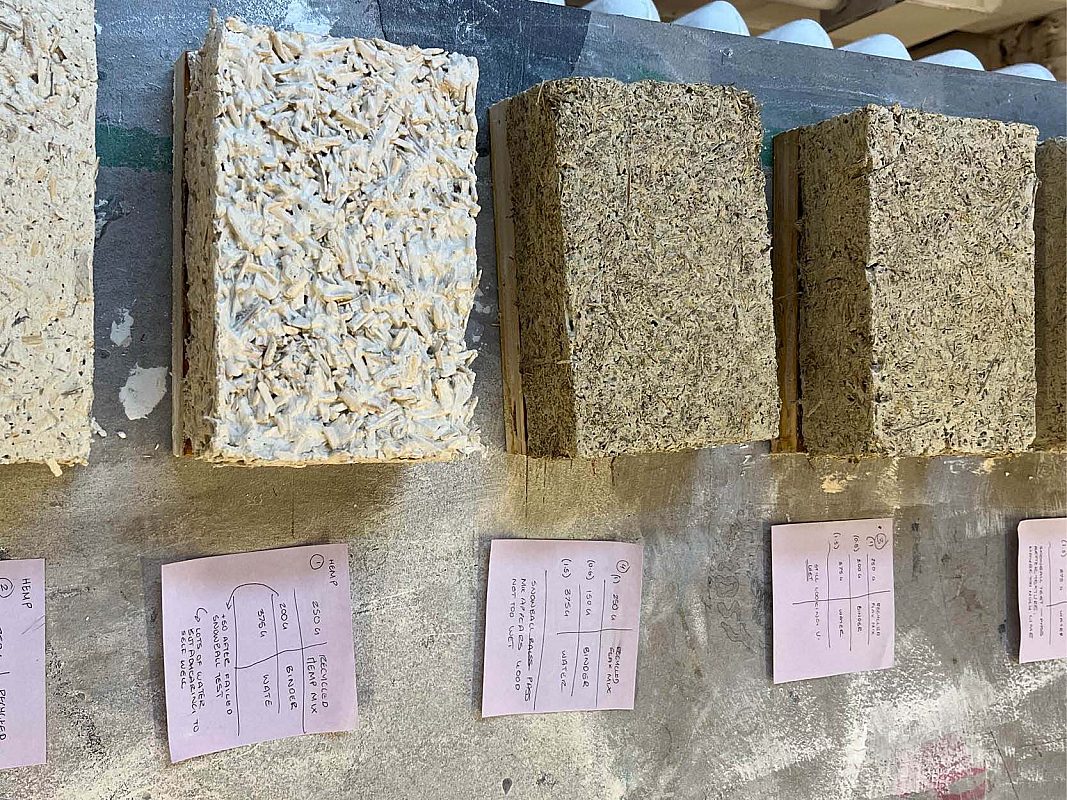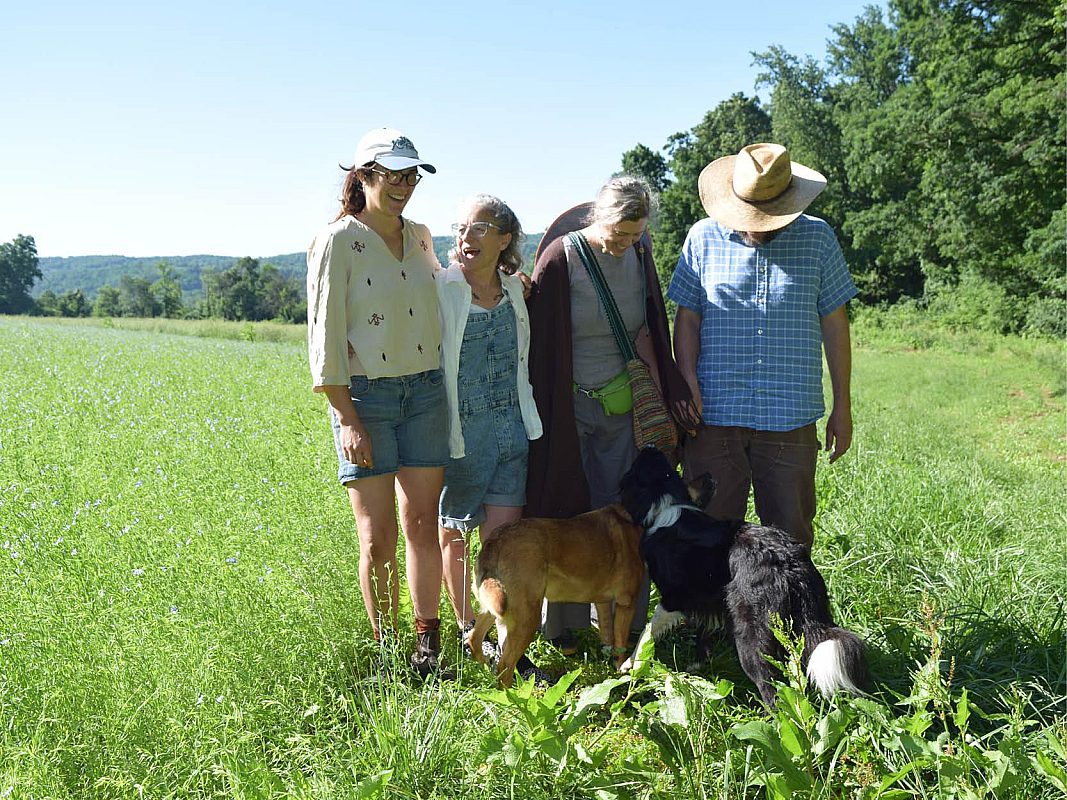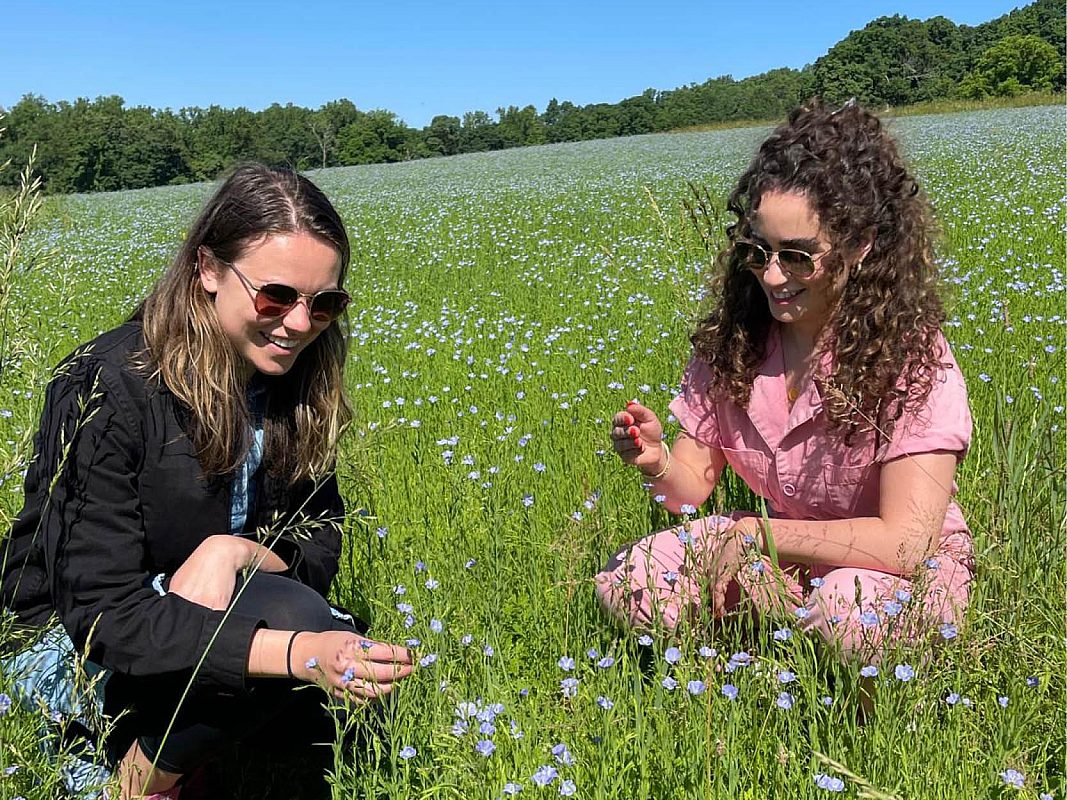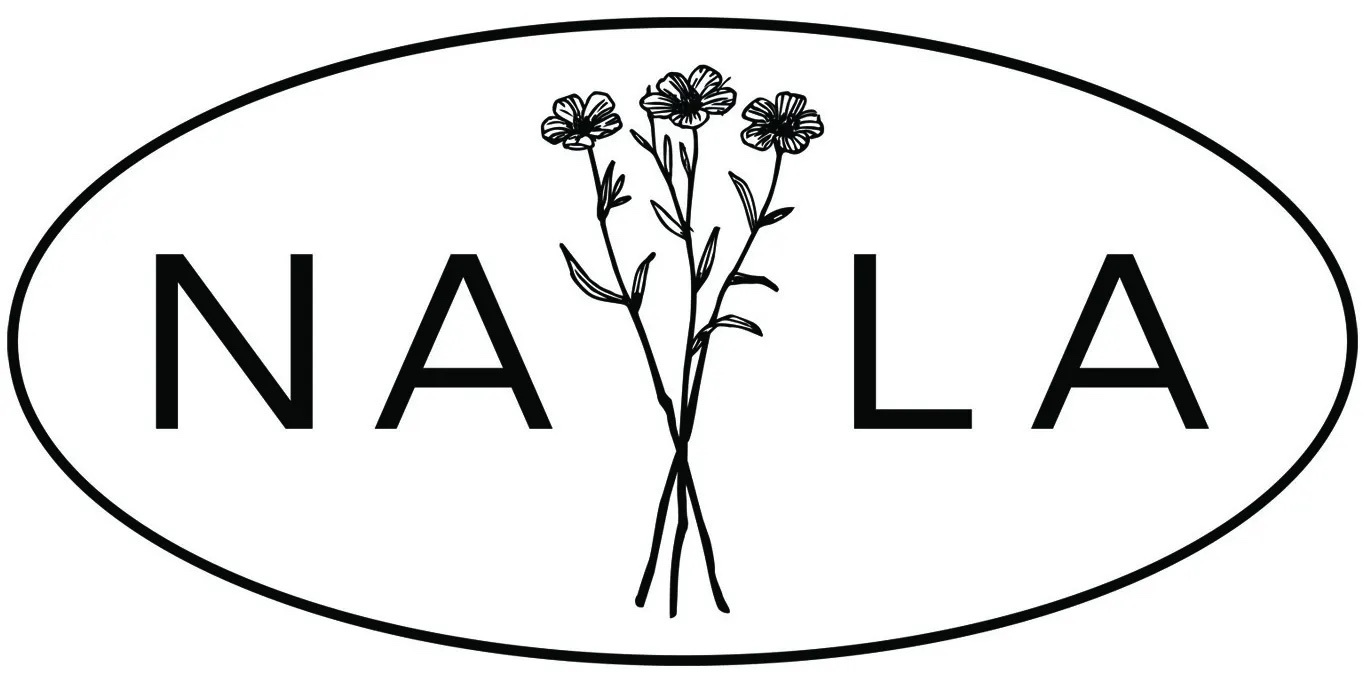Flax is a versatile natural fiber with significant environmental and economic advantages. We see the potential for scaling flax cultivation regionally and envision a future where flax fibers surpass and replace the production and use of polyester synthetics.
Flax Fiber Today
Flax (Linum usitatissimum) a blue flowering plant, is cultivated for fiber, linseed oil, and flaxseed. Archeological evidence from North Africa and Europe suggests that people have used flax to make clothing and shelter for over 36,000 years.
Growing flax for fiber in North America stopped around the 1940’s, coinciding with the development of synthetic fibers. States in the midwest like North Dakota still grow flax for seed, and Canada remains the dominant producer of flaxseed in the world. Yet, the concept of growing flax for fiber in North America was deemed impossible, until a few years ago.

Flax straw at Green Mountain Linen, photo by Jess Thies

Sue Schlabach of Green Mt. Linen shares her design from a workshop with Germana Tack, photo by Jess Thies
There are genetic differences and variation in the harvesting methods between fiber flax and seed flax. Fiber flax is bred to attain greater height and a higher percentage of fiber in the crop, while seed flax is bred for greater seed yields and oil content. Fiber flax requires specific harvesting equipment, different from that used to harvest seed. A flax “puller” harvests the plant from the ground, ensuring the full length of the fiber is preserved. Until recently, this harvesting equipment was unavailable in the US.
Generations of knowledge and expertise in growing fiber flax resides in Western Europe. According to the Alliance for EU Flax-Linen & Hemp, “three quarters of the world’s production of linen fibers is produced in France, Belgium and the Netherlands.” The Alliance for EU Flax-Linen & Hemp has traceability labels, EUROPEAN FLAX® and MASTERS OF LINEN® as measures of transparency and quality for fabrics produced in the EU.
Flax is grown in a seven year rotation, planting one crop in a specific field every seven years to prevent disease. Field rotation is shown to increase yields of the crops following flax. In recent years, climate change has resulted in lower yields and “the current priority is to select new varieties that are more resistant to water stress and high temperatures.”
Three quarters of the world's production of linen fibers is produced in France, Belgium and the Netherlands - Alliance for EU Flax-Linen & Hemp
When processed at scale in the EU, flax is zero-waste. All parts of the flax plant can be used, including the dust and woody plant exterior called shive.
HML is researching how flax shive can be used for flaxlime, a product similar to hemplime used in building insulation.

Flax shive cast with lime for flaxlime research
North American Flax Fiber
PA Flax Project originated from a conversation between a designer, Heidi Barr, and a farmer, Emma De Long. Both were curious to experiment with growing flax for fiber in North America. Recently they were awarded $1.7 million from the USDA Organic Market Development Grant (OMDG) to support and grow the endeavor. HML visited the PA Flax Project in May when 4 acres of beautiful blue flax flowers were in bloom. It is impressive to see firsthand how flax can be grown and hand processed from straw to gold.

The PA Flax Project team

HML staff Jess Thies and Ghizlaine Mallek visit the PA Flax Project field.
Hand processing flax straw is labor intensive. Flax must be broken to remove the shive, scutched to clean the fibers further, and then hackled in large combs to separate the long line fiber from short tow fibers. Heidi and Emma have a goal to build the first scutching mill in the US for processing flax at scale. We are rooting for them to make this a success!

Heidi from PA Flax Project using a break to separate flax fiber and shive (left), and Sue from Green Mountain Linen hand scutching flax on a scutching board (right).

Hackles used for separating short and long flax fibers at Green Mountain Linen (left), and the flax grown and processed there in Vermont (right).
While visiting Green Mountain Linen in Vermont, we learned about their study of the best processing methods to achieve high quality long line fiber. It was fascinating to see how they test variations in terroir by growing the same flax variety on different plots of land, resulting in avariations of crop height and color.
Green Mountain linen tests variations in terroir by growing flax in different locations, resulting in a diverse range of crop height and color.
Scaling Flax Production in North America
PA Flax Project and Green Mountain Linen will soon receive harvesting equipment from the EU, which will allow a significant step towards scaling up production.
North American fiber producers are beginning to grow and process flax regionally to replace polyester synthetics and meet current demand for natural fibers. The North American Linen Association, a nonprofit which began in 2022, brings together groups like PA Flax and Green Mountain linen with other fiber producers to facilitate knowledge sharing. Their collaborative research with Jennifer Kling focuses on developing seed varieties adapted to North American climates to produce long line fiber.

Linen designed and woven at Green Mt. Linen

Sue Schlabach of Green Mt. Linen shares her design from a workshop with Germana Tack
Regeneration of Flax
Healthy Materials Lab explores existing biobased solutions that can be locally grown and processed to support regional economies. Our research looks at the steps required to scale biobased materials and educate designers and stakeholders with firsthand knowledge of material lifecycles.
This research coincides with our upcoming exhibition, Regeneration of Flax: Linseed, Linen, Shive & Oil at the Arnold and Sheila Aronson Galleries. We hope you will attend to learn more!
Thank you to all who have contributed time and expertise to this research.
Read More
Join Our Academic Network
Get Access to our carefully researched and curated academic resources, including model syllabi and webinars. An email from an academic institution or a .edu email address is required. If your academic institution does not use .edu email addresses but you would like to join the network, please contact healthymaterialslab@newschool.edu.
Already have an account? Log in

